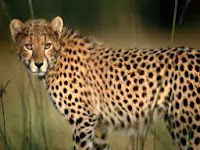The word ‘unique’ denotes ‘one of its kind’ or something
very special. Some animals are quite unique in this sense. For instance, the
blue whale is unique for its giant size and so also glow worms “Luciferae” that
emit greenish glow at night. Likewise, there are a few more creatures which are
unique.
Leech the parasite doctor, is a very special physician. Dr
Andreas Michalsen and colleagues from Essen ,
Germany
Leech therapy which benefits those with other causes of
pain, was used by the ancient Egyptians, Greek and Indian medicine men. They
used the leech to help maintain the humoral balance in the body. They attached
leech to the body for the cure, and detached it by sprinkling some slat water.
How it acts as a physician: The leech
which is used in medicine is called Hirudo
Medicinalis. It has five pair of eyes and two
sucker both on its front and back side.
.
The head sucker searches and penetrates while the back
sucker holds fast to the host. The
Bite of hirudo is painless because it has an anaesthetic
that makes the host feel nothing. This substance is under atudy.
The effect of its saliva: The leech saliva has many other molecules
of great medicinal interest. One of the molecules is a vaso-dilator and a histamine that increases the diameter of blood
vessels, helping to promote blood flow. Another is an enzyme called hyaluronidase. It breaks down hyaluronic acid, the bonding material of
the connective tissue, thus fostering the flow of blood and fluids from
affected areas. Another substance in leech saliva is hirudin. It is the most potent inhibitor of blood clotting known to
date. Hirudin in leech helps continued blood flow by breaking off the
aggregated fibrin plugs that clot and seal blood leaks. Hirudin also shuts off
the mechanisms of Factor VIII mediated blood coagulation. Genetic engineers in England are
successful in cloning the gene for hirudin and manufacture it through
recombinant DNA technology. We have to be thankful to the leech for the
benefits it has opened up for modern medicine. Hirudin made it possible to have
its cousins balellin and eglin.
How much blood it
drinks: Leech drinks hardly 15ml our of the 3000-5000 ml of the human
blood. And having drunk, the parasite doctor moves on to chew the cud for six
months.
 01:32
01:32
 Unknown
Unknown

.jpg)


.jpg)


.jpg)
.jpg)
.jpg)
.jpg)
.jpg)
.jpg)
.jpg)
















.jpg)
